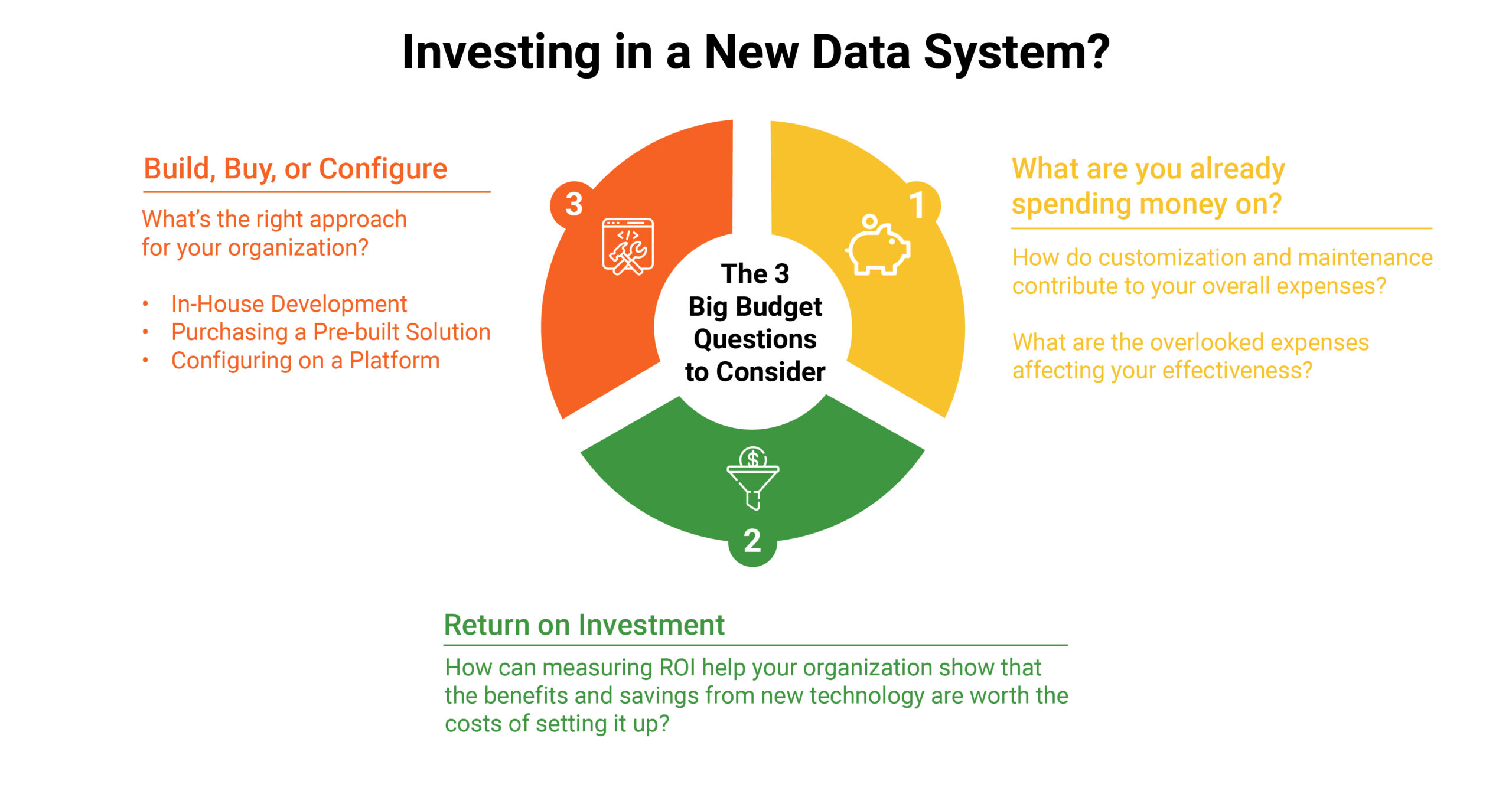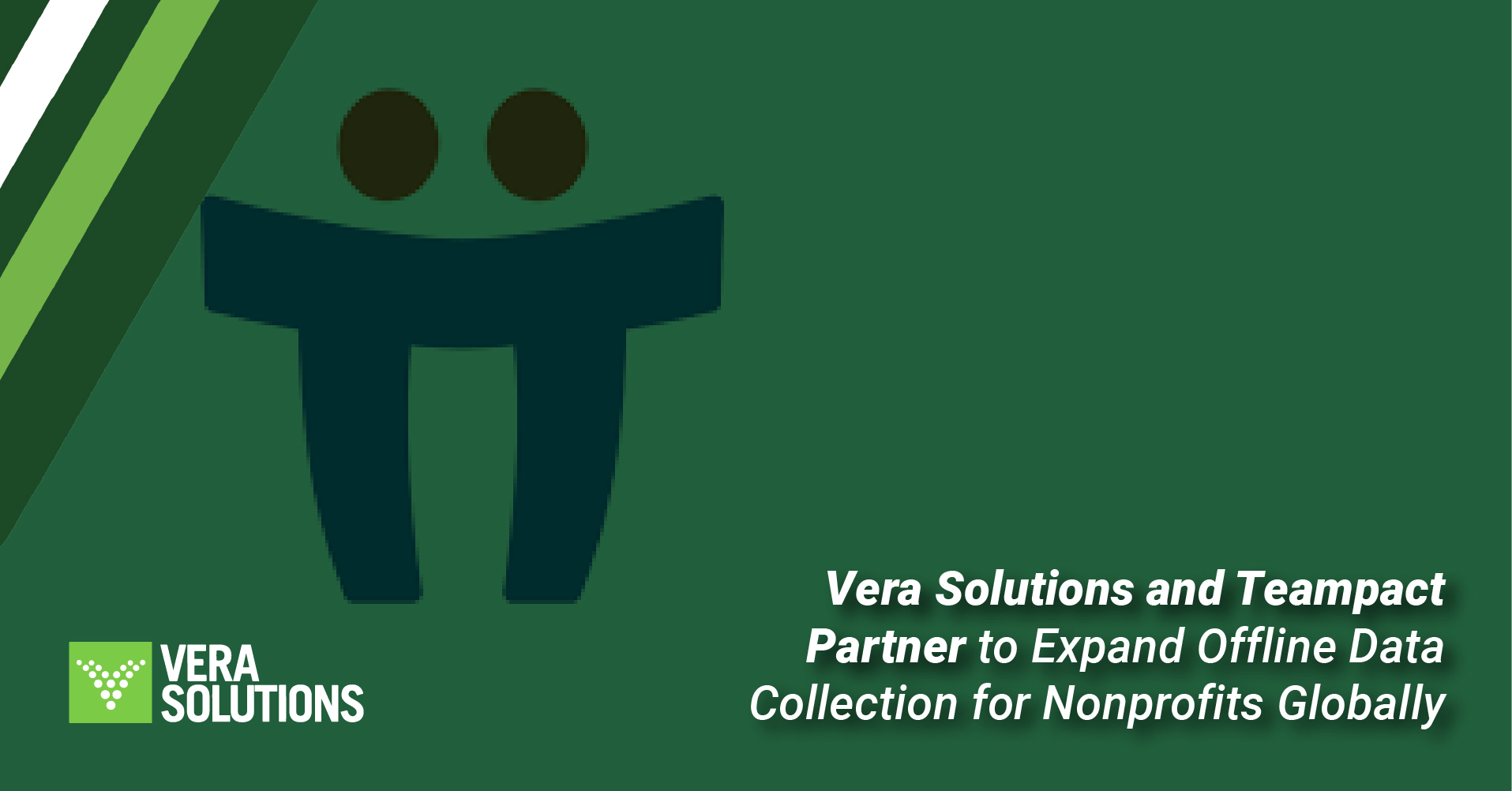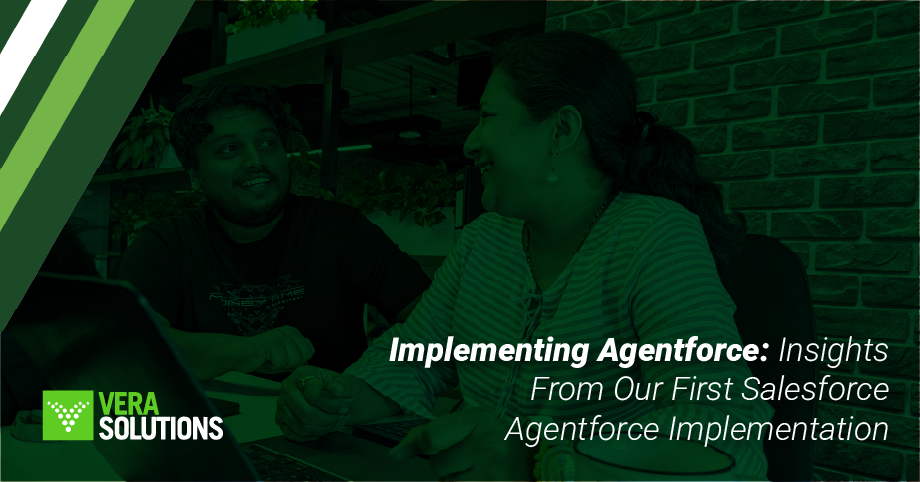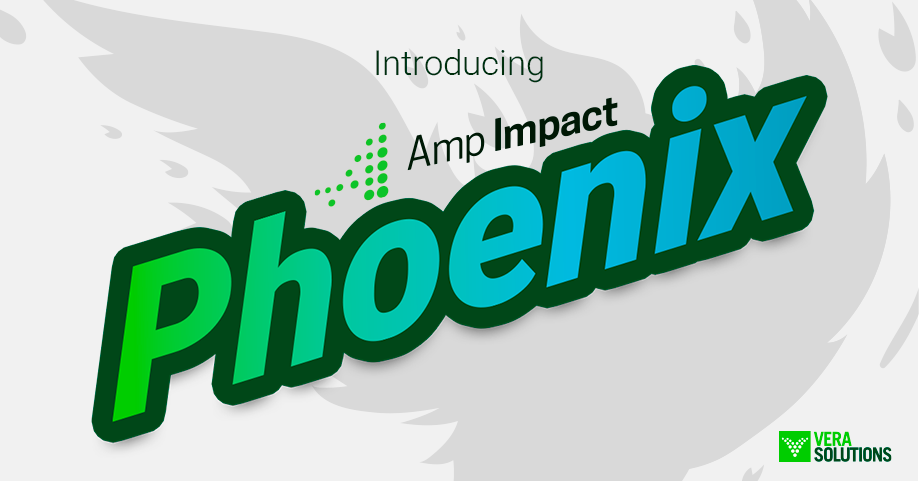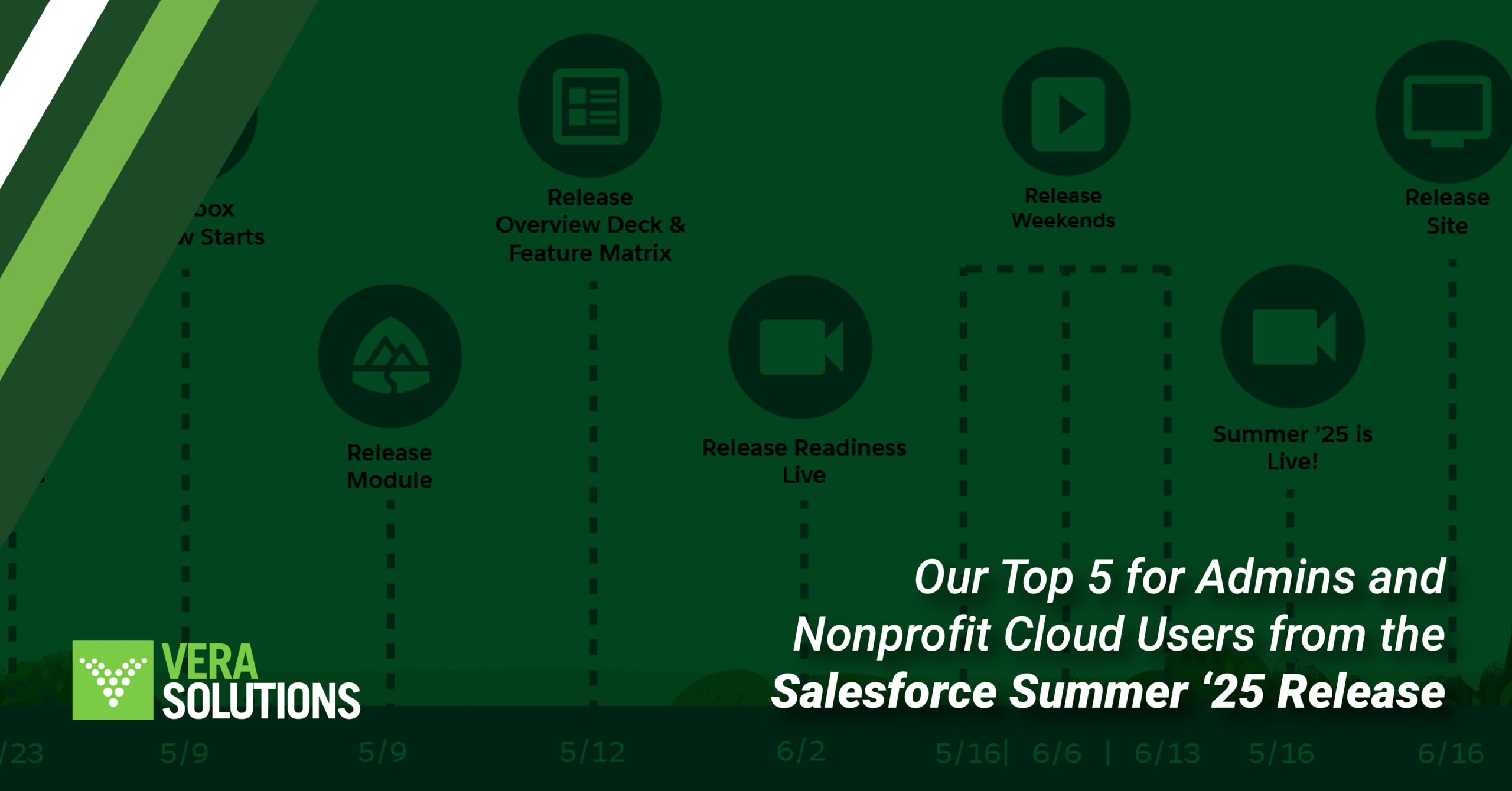Imagine you are working for a growing nonprofit organization and have identified a new technology solution that can streamline operations, enhance workflows, and amplify your organization’s overall impact. According to Salesforce’s Global Nonprofit Trends report, only 12% of nonprofits are considered ‘digitally mature,’ yet these organizations are four-times more likely to achieve their mission goals.
While you’re convinced of the solution’s potential, gaining stakeholder buy-in—especially from those controlling the budget—requires more than just data. It’s about strategically aligning the investment with organizational priorities and clearly showing how it will drive long-term benefits.
In this blog, we will cover three key questions to guide your budget proposal and a framework that will help when investing in a new technology solution.
The 3 questions are:
- What are you already spending money on?
- Return on Investment (ROI): how will this pay off?
- Build, Buy, or Configure: What’s the right approach for your organization?
Question 1: What are you already spending money on?
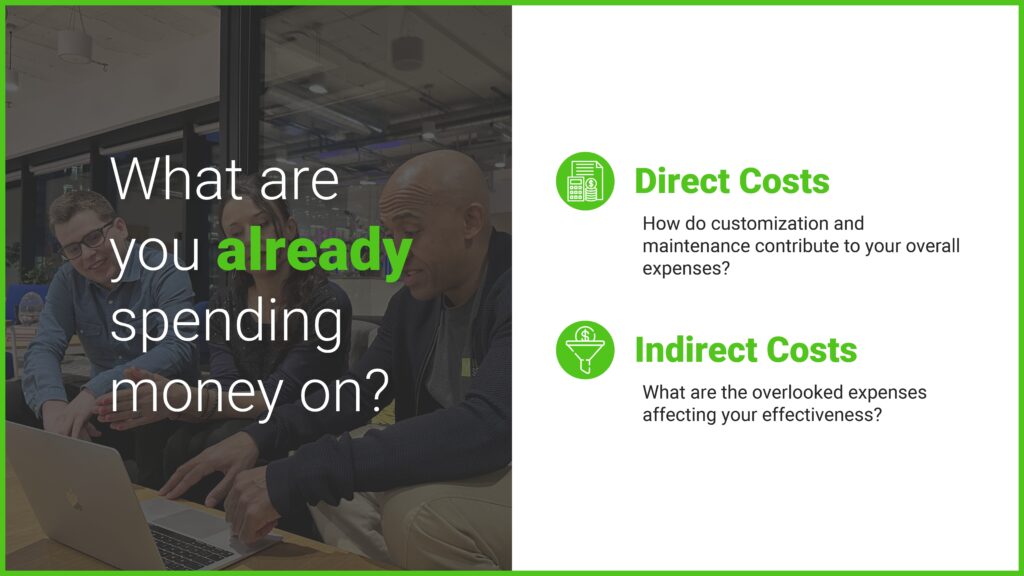
Before proposing a new technology solution, it’s essential to evaluate the costs and limitations of your current systems. This assessment should encompass not only the direct financial costs but also the hidden expenses associated with inefficiencies and operational hurdles. To unpack this question, let’s break it down into two components:
- Direct costs: How do customization and maintenance contribute to your overall expenses?
According to CFI, direct costs are those specifically associated with the creation of a product and can be directly linked to that product. In this context, direct costs refer to tangible, measurable expenses that can be easily quantified and attributed to the project or system.
Examples of such direct costs include:
- The costs of purchasing or leasing hardware and software
- Expenses related to implementation and integration, such as IT services, training, and data migration
- Costs of staff time directly related to system management and administration
- Ongoing maintenance and support contracts
- Indirect costs: What are the overlooked expenses affecting your effectiveness?
Indirect costs aren’t directly linked to a specific function, product, or department. As defined by CFI, indirect costs are essential for the overall operation and well-being of a company / organization and can encompass intangible expenses. These costs can be either fixed or variable. Essentially, in this context, indirect costs include those intangible expenses that support the company’s or organizations’ general functions.
Examples of such indirect expenses include:
- Overhead costs that support overall operations, not tied to specific projects, systems, or initiatives
- Security costs related to safeguarding the organization’s assets and data
- Administration costs, including expenses for management and administrative functions
Question 2: Return on Investment: how will this new solution pay off?
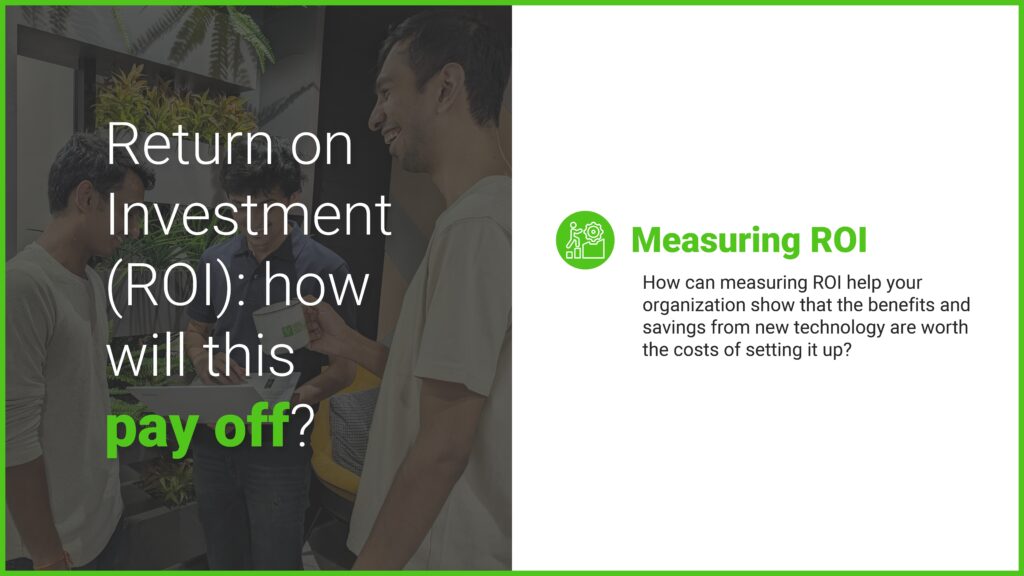
How much time and effort can the new system save? For example, if a new automated system reduces manual data entry time from 20 hours to 1 hour per week, you’re reclaiming over 900 hours annually. It can also help to illustrate how staff will be able to increasingly focus on higher-value activities, such as strategic planning or donor engagement, rather than getting bogged down with administrative tasks.
- Measuring ROI: How can measuring ROI help your organization show that the benefits and savings from new technology are worth the costs of setting it up?
Smart organizations tally up all these savings and benefits and compare them against the costs of deploying a new system to approximate the Return on Investment (ROI). ROI is a crucial metric for justifying the investment in new technology. It connects the additional expenditure to measurable outcomes and helps stakeholders understand the potential benefits of the new system in comparison to the costs required to stand it up.
In its 2023 recommendations for measuring ROI of GenAI investments, Gartner advises companies and organizations to consider ROI across:
- Quick wins: Advances that can be delivered quickly but are often narrow in scope
- Differentiating use cases: Benefits that help your organization differentiate itself among its peers but require a larger investment and time-to-value
- Transformational initiatives: Innovations that bring a larger upside but come with greater investment and risk
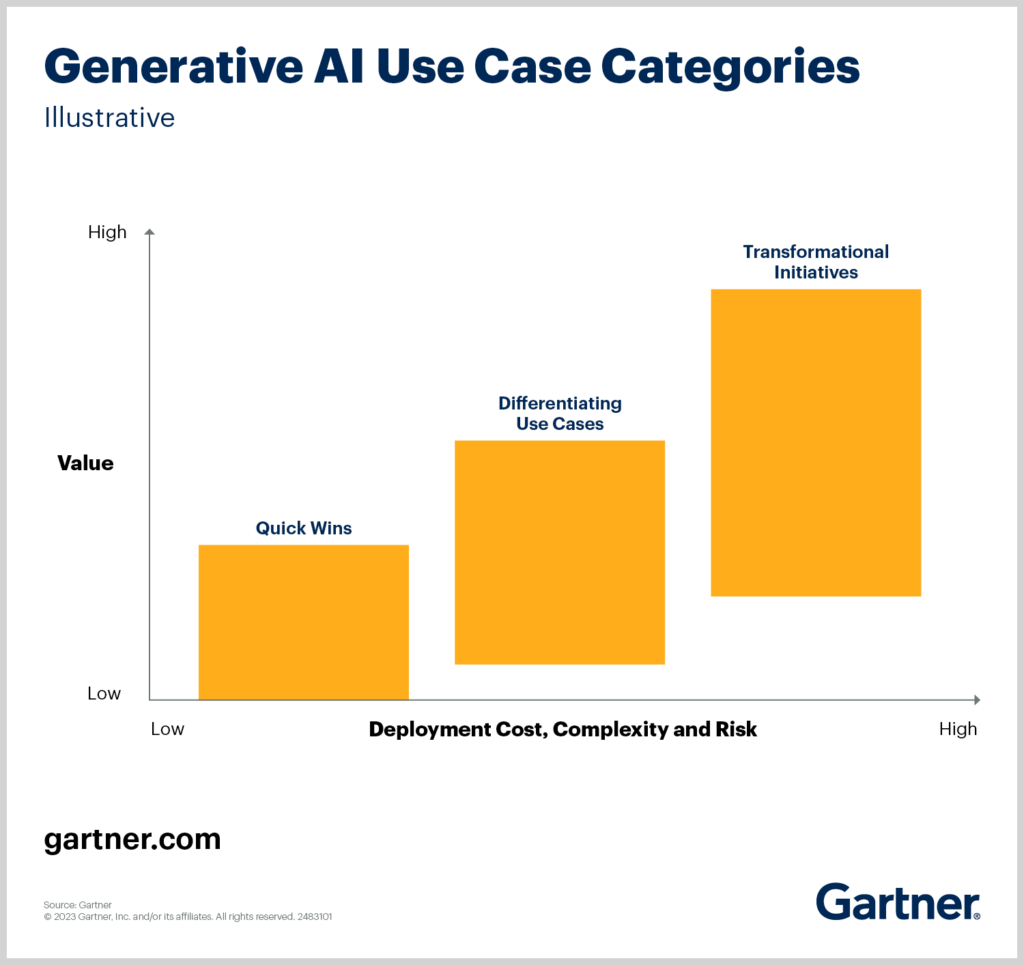
While GenAI is certainly ‘hot’ right now, looking at ROI across these three categories is equally relevant for other types of solutions, even more basic ones. For example, an organization seeking to become more data-driven might undertake a set of technology investments that include quick wins (e.g. creating new dynamic dashboards with existing data), differentiating use cases (e.g. building a proprietary application), and transformational initiatives (e.g. streamlining its enterprise architecture by sunsetting numerous point solutions and consolidating data into one or two database platforms).
It’s important to be realistic when calculating ROI and to consider risk, complexity, and unknowns from the start. This approach helps ensure long-term success – some investments may appear to have high ROI at first but come with hidden ongoing costs or technical debt.
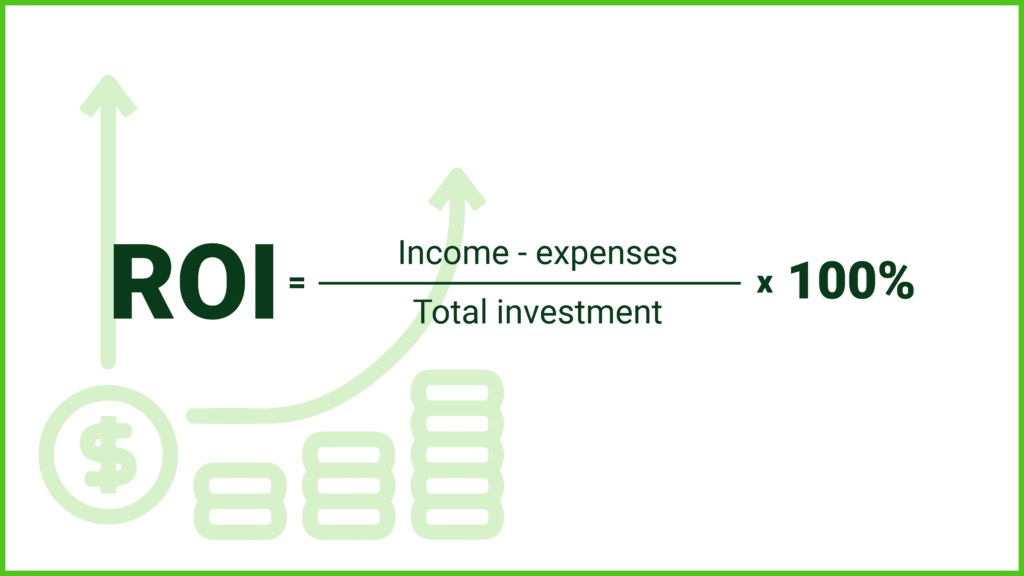
Question 3. Build, Buy, or Configure: What’s the right approach for your organization?
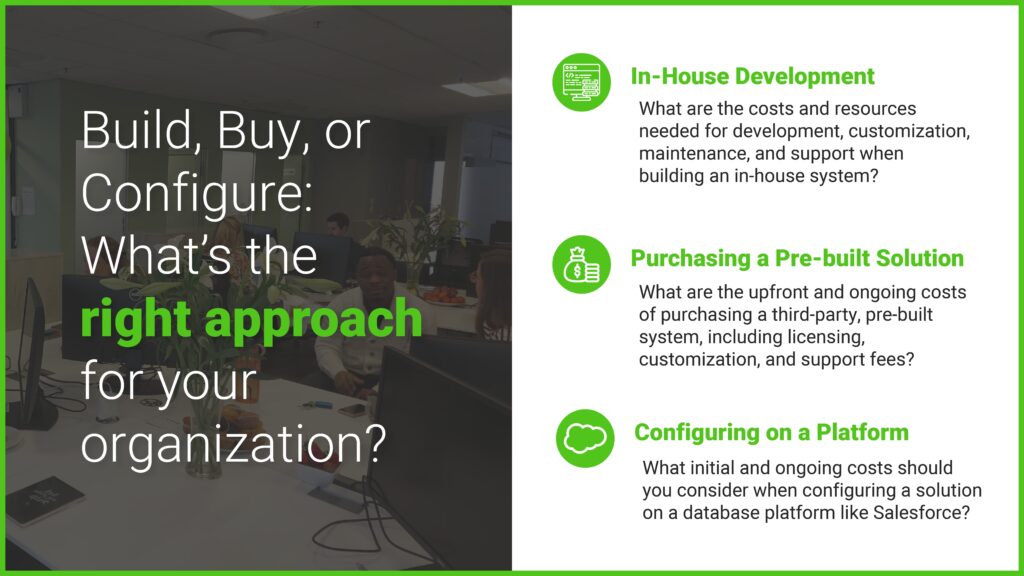
NGOs are often told they need to choose between developing an in-house solution or purchasing a third-party system, in other words to “build” or “buy”. In reality, these days, Buy vs Build has become more of a spectrum of options than a dichotomous decision, as low-code platforms like Salesforce, Microsoft Dynamics, ServiceNow, and Airtable give organizations ‘middleground’ Platform-as-a-Service options with which ‘building’ can be done through clicks not code. Nevertheless, there are still many cases where it proves more practical to buy a pre-built solution off-the-shelf or build one from scratch. Both sides of the spectrum come with unique advantages and trade-offs, so it’s essential to choose the approach that best fits the organization’s goals and resources and considers cost-effectiveness.
- In-House Development: What are the costs and resources needed for development, customization, maintenance, and support when building an in-house system?
Often, companies or organizations choose to build their own software to meet their unique needs. However, creating a custom solution requires a lot of resources, including time, skilled staff, and ongoing support. This leads to higher labor costs as well as additional costs often baked-in to managing a platform, such as handling of cybersecurity, data storage, and browser compatibility. Maintaining and upgrading the system over time can also put a strain on both budgets and staff, often making in-house development complicated and more expensive than expected.
In years passed, organizations invested heavily in on-site servers and costly software packages, but the shift to cloud services like Amazon Web Services, Microsoft Azure, and Google Cloud Platform have significantly lowered the costs of data storage and the barriers to building in-house applications or data lakes. There has also been a proliferation of open-source libraries and developer tools. At Vera, we’ve used javascript libraries like ChartsJS and DHTMLX to strengthen products like Amp Impact. Thus, the cost of going the homegrown tech route is, in some ways, lower than in years past.
For organizations building in-house technology solutions, it’s especially important to remain up-to-speed on the latest technology trends, according to McKinsey Digital. “Centralized strategic and innovation functions cannot hope to keep pace on their own. Companies will need to be much more involved in networks outside their organizations to spot, invest in, and even acquire promising opportunities.” McKinsey highlights that investing in homegrown technology can offer huge opportunities, but only for companies and organizations prepared to “develop true tech intelligence through a perpetual-learning culture”.
- Purchasing a Pre-built Solution: What are the upfront and ongoing costs of purchasing a third-party, pre-built system, including licensing, customization, and support fees?
Purchasing an off-the-shelf solution usually comes with lower upfront costs and faster time-to-value, offset by higher ongoing license costs that include ongoing support and updates. As with building custom solutions, long-term expenses involve ongoing maintenance, support, and future upgrades, though these typically require less personnel time than a custom solution. When evaluating setup costs for a new off-the-shelf system, it’s still important to consider both direct and indirect expenses tied to configuring, implementing, and rolling out the solution. Organizations still need to think carefully about and invest in change management – even the best technology requires some training and learning on the part of users.
Some operational areas may be better suited to off-the-shelf software than others. For example, small nonprofits can usually get by well with off-the-shelf tools for Accounting, Payroll, HR, document collaboration, and other back-office functions but may find that off-the-shelf tools for tracking program delivery or monitoring and evaluation do not fully meet their needs.
- Configuring on a Platform: What initial and ongoing costs should you consider when configuring a solution on a database platform like Salesforce?
These days, there are many options beyond just building or buying. Configuring a solution on a flexible database platform like Salesforce, Dynamics, ServiceNow, or Airtable may be the ‘goldilocks’ option for your organization. This means you take full control of the ultimate solution by tailoring it to your organization’s needs while also benefiting from pre-built features and components so you don’t need to develop them yourself–from simple aspects like login screens and ‘forgot password’ features to more advanced ones like configurable sharing logic or data import/export capabilities. With proper configuration, a system that might otherwise take 12+ months to build may be instead ready to launch in 3-6 months.
Configuration may involve tasks like building out your own data model, setting up your reference data, designing and building automation, setting up reports and dashboards, and adjusting which users can see and do what in the system. The beauty of platforms like Salesforce is that all of that can be done with clicks not code, which means faster time-to-value, more adaptability, and easier maintenance. Configuration comes with initial costs for installing the base software, customizing the system to fit your needs, and then deploying and training end users. Depending on your in-house capacity, all of that may require help from experts (see our blog here about choosing the right Salesforce partner).
After setup, just as in the other options, ongoing management is important for maintaining performance and security. You’ll also need to consider costs for personnel—either in-house or outsourced–and tools for system oversight.
When looking at costs, keep in mind that investing wisely in configuration can boost efficiency and scalability compared to the other options, making your operations run more smoothly in the long run.
Balancing the budget for a successful investment
Securing budget approval for a new system can be challenging, especially for resource-constrained NGOs. Fortunately, many tech companies provide free or discounted services for nonprofits. For example, the Salesforce Power of Us Program offers free and discounted licenses for Salesforce products. Additionally, solutions like Amp Impact, built on the Salesforce platform, also provide discounted licenses, and Vera also offers discounted consulting services for nonprofits. Once getting clear about the available nonprofit discounts, you’ll want to create a clear and comprehensive budget that comprises the new system’s direct and indirect costs, estimate the expected ROI of the new system, and weigh the options of building, buying, or configuring on a platform. A budget proposal usually comes together by presenting a picture of the Total Cost of Ownership over 3-5 years – this helps stakeholders gain a reasonable expectation of the full set of costs and weigh them against the benefits of the new system.
Many nonprofits are turning to technology solutions to adapt and improve how they serve their communities effectively. The Global Trends 2040 report emphasizes the fast-paced and transformative nature of technological advancements that is expected in the next two decades. This underscores the necessity of staying ahead in this evolving landscape, as technology becomes increasingly integrated into our lives and work.
Stepping back, organizations should not merely be thinking about how to secure budget approval but how to ensure that a new system provides enduring value for your organization. By approaching budget discussions with a strategic and thoughtful plan, you can position yourself to achieve this goal and future-proof your organization’s impact.
Why Choose Vera Solutions?
With over 14 years of experience working with nonprofits, Vera Solutions has been a leader in developing fundraising, portfolio and program management, impact measurement, and grant management solutions on the Salesforce Platform.
Having taken an advisory role in the Nonprofit Cloud product suite development, we have some key insights and recommendations on where the new Salesforce NPC can add value and drive efficiencies for your organization.
Currently, over $12 billion of programs, grants, and projects advancing the UN Sustainable Development Goals are managed using Vera’s flagship product, Amp Impact. Our team has extensive knowledge of the nonprofit sector and deep experience in delivering the right solutions for a wide range of clients.
We also offer:
- A large pool of highly skilled and experienced Salesforce Consultants, with over 350 active Salesforce certifications and counting
- Experience successfully delivering over 1,000 projects in the social sector
- More than 430 customers working in 150+ countries
- A dedicated, multilingual team located across 5 continents
As a long-time Salesforce.org International Impact Partner and a Summit-Tier Salesforce Consulting Partner, we’ve been dedicated to the Salesforce nonprofit ecosystem for more than 14 years. With the growth of Amp Impact, Vera Solutions has also been recognized twice as Salesforce.org Product Partner of the Year (2019, 2022) and with a Partner Innovation Award (2021). As such, we are constantly evaluating the Salesforce platform’s latest features and enhancements and how they can be leveraged to support our clients’ missions.

